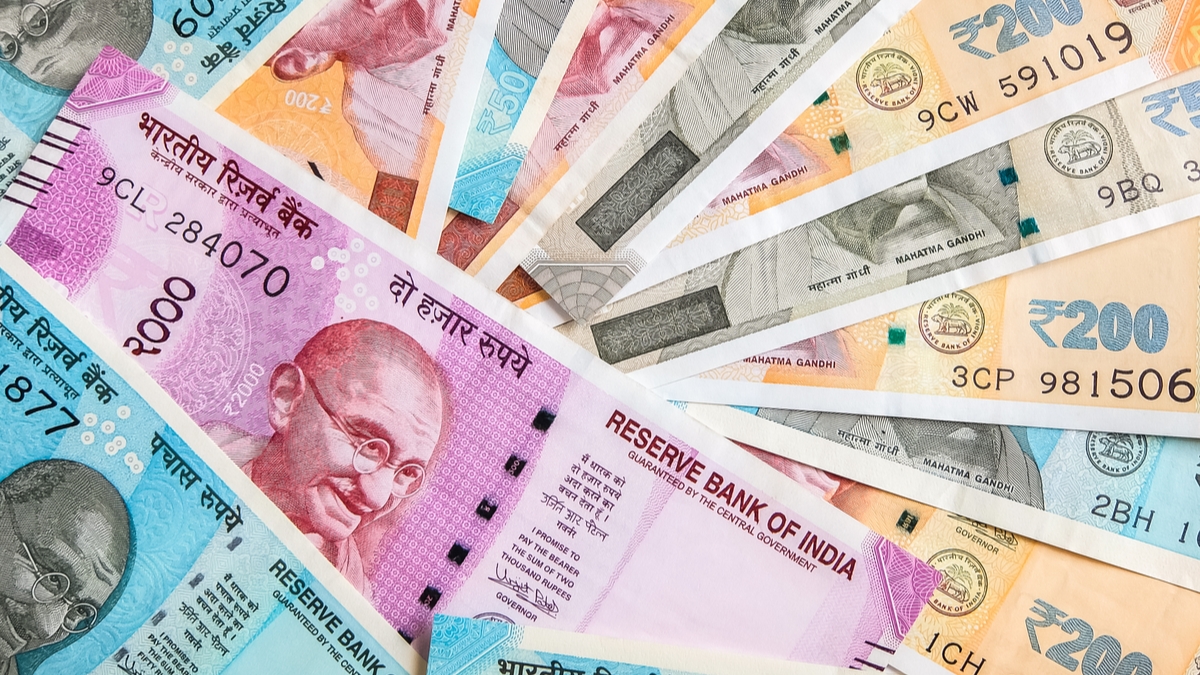Rupee’s Short-Term Trend Takes a Positive Turn as Dollar Rises for 6th Consecutive Week; Traders Focus on India GDP and Manufacturing Data

Rupee’s Short-Term Trend Takes a Positive Turn as Dollar Rises for 6th Consecutive Week; Traders Focus on India GDP and Manufacturing Data
The Indian rupee’s recent appreciation marked a welcome shift after a period of decline. This was influenced by the central bank’s verbal intervention to support the currency and the influx of foreign funds into the market. However, the minutes from the RBI’s meeting conveyed a cautious stance due to mounting concerns about food inflation and irregularities in rainfall patterns. These factors emphasize the importance of close monitoring and strategic policy decisions to address potential challenges.
During the past week, foreign institutional investors displayed interest in the Indian market, purchasing equities totaling $209 million. On the domestic front, benchmark indices faced a downward trajectory for the fifth consecutive week, reflecting a cautious mood driven by regional uncertainties and a preference for risk-averse investment strategies. These developments underscore the intricate balance between positive and cautious factors influencing India’s financial landscape.
Despite some spikes in volatility and trading volumes during the past week, the Indian rupee maintains a position of having the lowest implied volatility among emerging markets. This stability is attributed to the Reserve Bank of India’s actions in absorbing a significant portion of the approximately $19 billion worth of inflows into the country’s local stocks and bonds throughout this year. The central bank’s efforts have played a crucial role in mitigating potential currency fluctuations and maintaining a relatively stable environment amid global uncertainties.

In the previous week, the spot USDINR exchange rate experienced a decline of 0.54%, resulting in a decrease of 45 paise to reach a closing level of 82.66. This marked the weakest weekly close observed within the span of a month. From a technical perspective, the short-term trend of the USDINR pair displayed signs of weakness, characterized by the formation of lower lows and a subsequent dip below short-term moving averages. The current dynamics of the pair suggest that it has a support level around 82.30, while resistance is expected around 82.90. These levels serve as key markers for potential price movements in the near term.
During the week ending on August 18, India’s foreign exchange reserves experienced a notable decrease of $7.27 billion, causing the total reserves to reach $594.9 billion. This decline constitutes the most substantial weekly drop since February 10. Alongside the decline in reserves, the Indian rupee also faced downward pressure, falling below the significant psychological level of 83 against the US dollar within the same week. These developments highlight the potential impact of various economic factors and market dynamics on India’s foreign exchange situation and currency performance.
The US dollar index has displayed a continuous upward trend for six consecutive weeks, marking its longest winning streak since May 2022. This ascent has been attributed to the rise in short-term Treasury yields. Federal Reserve Chair Jerome Powell’s indication that borrowing costs will remain elevated for an extended duration has contributed to the dollar’s strength.

In contrast, the euro faced a decline for the sixth consecutive week, representing its lengthiest losing streak since 2018. The European Central Bank’s President Christine Lagarde’s statement regarding the intention to set interest rates at necessary levels to control inflation has played a role in the euro’s weakening trend. These developments reflect the influence of central bank statements and market sentiments on the performance of these major currencies.
CFTC Position
The foreign exchange market saw a predominant trend of selling in Australasian currencies, possibly influenced by concerns related to China. Notably, speculators engaged in the selling of 14.4k Japanese yen, 10.4k Australian dollars, and 4.1k New Zealand dollars. Conversely, there was an increase in buying activity for 8.1k British pounds. However, the euro experienced a small level of selling, totaling 1.1k contracts. Overall, there was a reduction of approximately $2 billion in the aggregate dollar short position over the course of the week. These activities reflect the dynamic nature of the currency markets and the diverse factors influencing traders’ decisions.

What to Watch
In the upcoming week, the data calendar is expected to be filled with various economic indicators from around the world, including the Purchasing Managers’ Index (PMI) numbers and regular weekly economic data releases. There is growing concern that Chinese economic data might further highlight the deteriorating state of the economy. Conversely, India is anticipated to announce a remarkable surge in GDP growth, largely driven by a manufacturing sector that is experiencing a favorable alignment of factors contributing to its positive performance. These contrasting trends in economic data reflect the complex and varied dynamics that impact global economies.



